
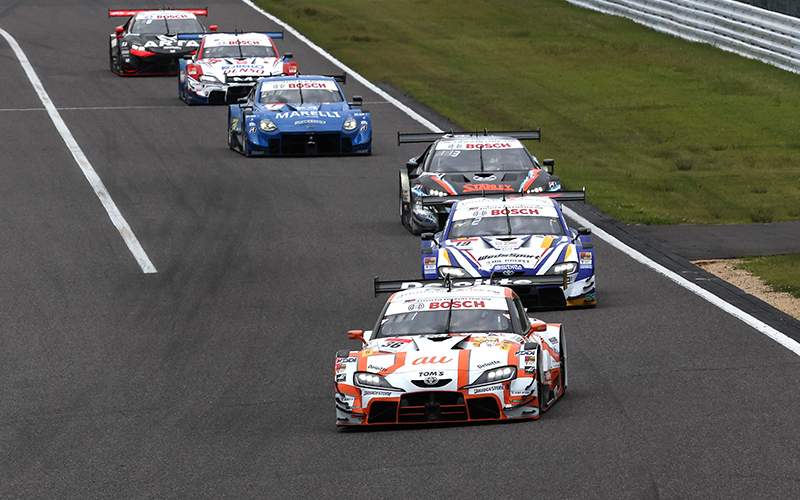
As we now enter the month of February 2024, the teams and carmakers are proceeding with their tests and announcements of their race programs in preparation for the opening round of the season. The other day, GTA, the promoter of SUPER GT, announced the 2024 season Sporting Regulations and the accompanying rules involved.
In line with the “SUPER GT Green Project 2030” the number of sets of tires a team can bring for use in one round has been reduced, and the qualifying format under which the races will be conducted has changed. Furthermore, the introduction of carbon neutral fuel (CNF) will also be promoted in the GT300 class.
In addition, the handling of cases in which a race is ended prior to the designated distance and not all of the required pit stops have been completed is now clearly stated in the Sporting Regulations. The following is a brief introduction of the contents stated above.
Adoption of a “Combined time format” for Q1 and Q2 official qualifying sessions. Points awarded to 2nd and 3rd place qualifiers.
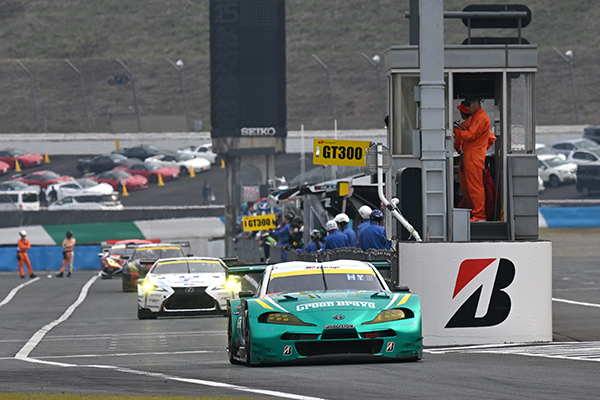
Regarding the official qualifying, as with last season the time attacks will be run by two different drivers from each team. However, this season each team’s final position will be decided by the combined times of the two drivers. This means that all the teams will run in both Q1 and Q2. The time length of the qualifying sessions for the GT500 and GT300 (two) classes will remain the same, but while the Q1 sessions will be the same at 10 minutes, the Q2 sessions will be reduced to 8 minutes (instead of the former 10 minutes).
Furthermore, whereas until last year each team was allowed to use two (2) different tire sets (2 sets, total of 8 tires) for Q1 and Q2, from this season each team will only be allowed to use one (1) set (total of 4 tires) for Q1 and Q2. As until now, the teams will start the race with the same tire set used in the qualifying.
In addition, whereas in the past the fastest qualifier (pole position) received one (1) series point, from this season the 1st-place qualifier will receive three (3) series points, the 2nd-place qualifier two (2) points and 3rd-place qualifier one (1) point. Also, the record for winning pole position will be given to the two drivers who competed in Q1 and Q2.
This new qualifying format means that all the cars will compete through to Q2, thus emphasizing the unique appeal of SUPER GT as a competition in which two drivers work together toward victory. Also, the fact that no cars will run only in Q1 means that the conditions of tire use will be equal for all cars.
The number of tire sets allowed per/round (for dry conditions) will be four (4) for a 300km race. One set less than last season.
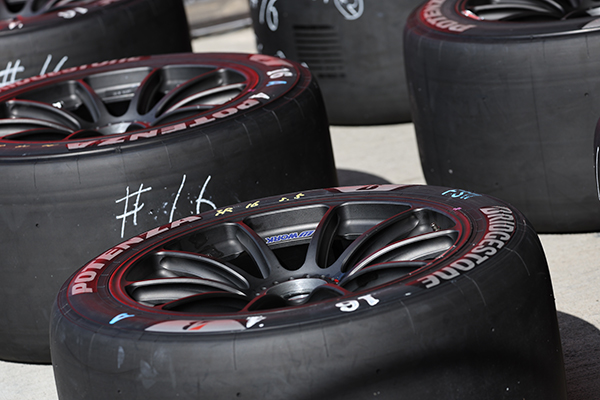
Last season, the number of tires that could be brought to and marked for one round (from official practice to qualifying and the race) was five (5) sets (1 set = four (4) tires (2 front, 2 rear) of dry track-use tires and six (6) sets of wet track-use tires, but from this season the number of sets is reduced by one (1) set for each type. Note that for rounds with a race distance of over 300 km, the number of tire sets is decided separately based on the total running distance.
This contributes to an overall reduction in environmental cost (footprint) of SUPER GT.
Adoption of Carbon Neutral Fuel (CNF) for the GT300 class as well
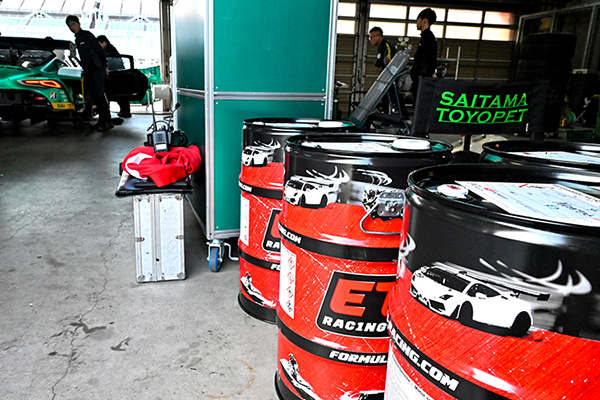
From last season, the GT500 class has adopted the CNF “GTA R100,” but for the GT300 class it was decided to postpone its adoption due to the wide variety of car types competing. From the 2024 season, the GT300 class will adopt the CNF “GTA R50,” and the “Fuel” section of the Sporting Regulation has been changed to specify that, “Only the fuel sold by GTA can be used in the series.”
In line with the “SUPER GT Green Project 2030” announced last year, we are continuing to pursue efforts to promote motor sports that reflect the social climate.
Handling of cases where cars have not completed the required pit stops when a race ends is now clearly stated in the Sporting Regulations
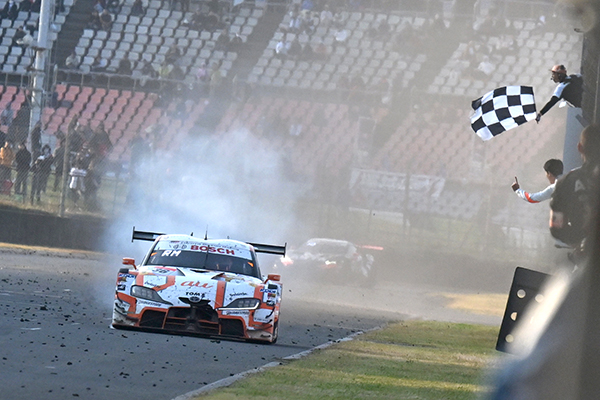
The handling of cases in which a race has to be ended prior to the designated distance and not all of the required pit stops have been completed is now clearly defined in the Sporting Regulations. If a car takes the checkered flag at the end of a given race’s predetermined number of laps (time) without completing the required number of pit stops, the car is disqualified. However, it is now clearly defined in the Sporting Regulations that if the race has to be terminated before 75% of the predetermined race distance is completed, the pit stop number requirement is nullified, and in the case that a race is terminated via a Safety Car introduction or a Red Flag after 75% of the predetermined race distance has been completed, one lap will be subtracted from the race result of cars that have failed to complete the required number of pit stops.
Although there are other changes besides those cited above, notice will be given of them in bulletins, etc., to be released later. The timing of their release will soon be announced, so we ask for you to wait a little longer.
| 4/13-14 | Round1 OKAYAMA | |
| 5/03-04 | Round2 FUJI | |
| 6/01-02 | Round3 SUZUKA | |
| 8/03-04 | Round4 FUJI | |
| 8/31-9/01 | Round5 SUZUKA | |
| 9/21-22 | Round6 SUGO | |
| 10/19-20 | Round7 AUTOPOLIS | |
| 11/02-03 | Round8 MOTEGI |